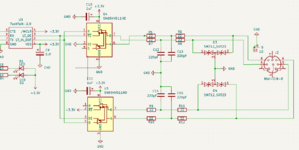twelvetone12
Well-known member
ATmega328's UART can run faster with very low error rate, I use it at 500k. TashTalk on the PIC does 1M. I can't say anything on the EtherWave unfortunately, I never even saw one...
How do you mean? The internal UART is a real UART, it is just integrated?Well I'm curious what the benefit of using the uC's internal UART versus a dedicated "real" UART can do. AFAIK most of them aren't really designed for stuff above 115200bps.
I guess it depends on the application? The atmega328 datasheet gives the usart settings for up to 1M when running @ 16mhz.Well I'm curious what the benefit of using the uC's internal UART versus a dedicated "real" UART can do. AFAIK most of them aren't really designed for stuff above 115200bps.
I use both of them, but I find them extremely clunkyWe had a similar problem with STM32 shortage, so we switched to Nucleo boards for prototypes..
Do you know STM32Cube IDE and CubeMX? It allows you to set up your project within minutes. This includes FreeRTOS and Networking! You would never want to go back to Arduino if you are a Pro
That is a parallel part. The MCU integrated UART will be faster because it will automatically shift out, while you'll have to use 8 pins for data, plus more for control for an external one. Code wise, you'll have to set the output and strobe it...I went to Mouser and just searched for a UART that is RS485 compliant. Here's one:
https://www.ti.com/lit/ds/symlink/tl16c752c.pdf
Hum. Not sure I agree. I've never reached for an external UART when the MCU has an internal one. I'd reach for a better MCU if I needed more from my UART.everybody here already knows that
Solder it on the underside?Aaannddd I reversed the USB connector on the board!sigh
I reckon everybody here already knows that
I went to Mouser and just searched for a UART that is RS485 compliant. Here's one:
Oooh this is a good idea, I was already drawing ad adapterSolder it on the underside?
We've all been there.

The UART protocol is the same between both versions, the only difference is that the !MCLR pin is available in 2.0.I'm using version 2.0, is there anything special I need to do in software for this version? Or is it just a drop in for 1.0?
